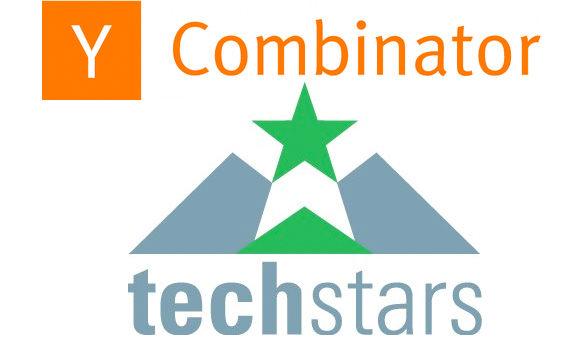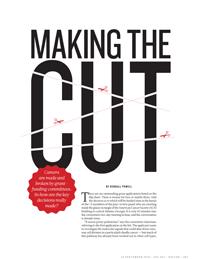 What do you get when you combine 7 panelist plus one moderator on to a stage for 30 minutes to talk about a serious topic? Answer: Not much. And that was evident on today’s Angel vs. VC panel.It’s a shame. There are real changes in the venture capital industry and it would have been fun to talk about them. I said almost nothing in the 30 minutes.
What do you get when you combine 7 panelist plus one moderator on to a stage for 30 minutes to talk about a serious topic? Answer: Not much. And that was evident on today’s Angel vs. VC panel.It’s a shame. There are real changes in the venture capital industry and it would have been fun to talk about them. I said almost nothing in the 30 minutes.
It’s a shame. There are real changes in the venture capital industry and it would have been fun to talk about them. I said almost nothing in the 30 minutes.
My friend Ethan Anderson put it best to me after the panel, “You probably shouldn’t have been up there. There was a fight going on and it’s clear that you were neutral and didn’t have a dog in the fight. Maybe you should have moderated, but that’s likely why the panel went how it did.” I think that’s about right. Perhaps I shouldn’t have pushed to be on the panel in the first place.

 The last decade has seen soaring levels of activity in the field of green energy production. Governments are pushing to decrease carbon dioxide (CO2) emission levels while increasing the delivery of clean energy. Cleantech is now high on the UK government’s agenda and therefore brings with it its own strategic, political and fiscal considerations.
The last decade has seen soaring levels of activity in the field of green energy production. Governments are pushing to decrease carbon dioxide (CO2) emission levels while increasing the delivery of clean energy. Cleantech is now high on the UK government’s agenda and therefore brings with it its own strategic, political and fiscal considerations. Popular Mechanics magazine today unveiled its sixth annual
Popular Mechanics magazine today unveiled its sixth annual  Since humans began to understand their own mortality, we have tried everything we could think of to fight off death. Some people have had more success than others in that field. But if you thought Death got pissed when Bill and Ted beat him at Battleship, you should see what he does to the people that are out there really saving lives.
Since humans began to understand their own mortality, we have tried everything we could think of to fight off death. Some people have had more success than others in that field. But if you thought Death got pissed when Bill and Ted beat him at Battleship, you should see what he does to the people that are out there really saving lives. By unanimous decision, the California Air Resources Board approved a new regulation to have 33 percent of California’s electricity come from renewable sources by 2020. Chairwoman Mary D. Nichols said, “The Renewable Electricity Standard means cleaner energy for California’s households and businesses. This standard is going to further diversify and secure our energy supply while also growing California’s leading green technology market, which will lead to cost savings for consumers.” (Source: UPI)
By unanimous decision, the California Air Resources Board approved a new regulation to have 33 percent of California’s electricity come from renewable sources by 2020. Chairwoman Mary D. Nichols said, “The Renewable Electricity Standard means cleaner energy for California’s households and businesses. This standard is going to further diversify and secure our energy supply while also growing California’s leading green technology market, which will lead to cost savings for consumers.” (Source: UPI) Where's Harvard? Why are all the British Universities out of the top five? The Times Higher Education has published its list of the top 100 universities in the world - just days after a competing list was published. See how they compare...
Where's Harvard? Why are all the British Universities out of the top five? The Times Higher Education has published its list of the top 100 universities in the world - just days after a competing list was published. See how they compare... Thomas Friedman provides a
Thomas Friedman provides a 

 There are six outstanding grant applications listed on the flip
chart. There is money for two, or maybe three. And the decision as to
which will be funded rests in the hands of the 15 members of the
peer-review panel who are meeting inside the glassy rectangle of the
There are six outstanding grant applications listed on the flip
chart. There is money for two, or maybe three. And the decision as to
which will be funded rests in the hands of the 15 members of the
peer-review panel who are meeting inside the glassy rectangle of the  Years ago, Horage Burgess prayed and received divine inspiration. He says that God told him "If you build be a treehouse, I'll see that you never run out of material."
Years ago, Horage Burgess prayed and received divine inspiration. He says that God told him "If you build be a treehouse, I'll see that you never run out of material." Writing has allowed me to meet a slew of smart people. Some of these people are now virtual acquaintances and some are very close friends on a personal and professional level. Each article that you publish is a synthesized thought process that may click with other entrepreneurs instantly. Have you ever had a feeling when reading an article that "Wow, they are thinking exactly what I'm thinking"? By writing, you are likely to encounter a handful of people that experience the same thing. Occasionally one of those people will reach out to you via email or bump into you at an event. You might make a new acquaintance, a new co-founder for the future, potential investor, hire,etc. At the end of the day, being an entrepreneur is about finding other smart (hopefully smarter) people to collaborate with and writing frequently helps make this happen.
Writing has allowed me to meet a slew of smart people. Some of these people are now virtual acquaintances and some are very close friends on a personal and professional level. Each article that you publish is a synthesized thought process that may click with other entrepreneurs instantly. Have you ever had a feeling when reading an article that "Wow, they are thinking exactly what I'm thinking"? By writing, you are likely to encounter a handful of people that experience the same thing. Occasionally one of those people will reach out to you via email or bump into you at an event. You might make a new acquaintance, a new co-founder for the future, potential investor, hire,etc. At the end of the day, being an entrepreneur is about finding other smart (hopefully smarter) people to collaborate with and writing frequently helps make this happen. "Development is a do-it-yourself proposition. ... It's really up to
us," says Steve Mercil with the fervor of an evangelist. Talking about
angels — secular, not celestial — the CEO of St. Paul-based RAIN Source
Capital describes the role angel investors play in helping small
companies grow in communities across the country.
"Development is a do-it-yourself proposition. ... It's really up to
us," says Steve Mercil with the fervor of an evangelist. Talking about
angels — secular, not celestial — the CEO of St. Paul-based RAIN Source
Capital describes the role angel investors play in helping small
companies grow in communities across the country. So much for the big showdown. After
So much for the big showdown. After  Two-and-a-half years ago, we described eight technology-enabled business trends that were profoundly reshaping strategy across a wide swath of industries.1 We showed how the combined effects of emerging Internet technologies, increased computing power, and fast, pervasive digital communications were spawning new ways to manage talent and assets as well as new thinking about organizational structures.
Two-and-a-half years ago, we described eight technology-enabled business trends that were profoundly reshaping strategy across a wide swath of industries.1 We showed how the combined effects of emerging Internet technologies, increased computing power, and fast, pervasive digital communications were spawning new ways to manage talent and assets as well as new thinking about organizational structures. “I never think of the future,” Albert Einstein once observed. “It comes soon enough.” Most business managers, confronted with the global forces shaping the business landscape, also assume that their ability to sculpt the future is minimal. They are right that they can do little to change a demographic trend or a widespread shift in consumer consciousness. But they can react to such forces or, even better, anticipate them to their own advantage. Above all, they ignore these forces at their peril.
“I never think of the future,” Albert Einstein once observed. “It comes soon enough.” Most business managers, confronted with the global forces shaping the business landscape, also assume that their ability to sculpt the future is minimal. They are right that they can do little to change a demographic trend or a widespread shift in consumer consciousness. But they can react to such forces or, even better, anticipate them to their own advantage. Above all, they ignore these forces at their peril. Catherine Mott had never heard of angel investors when a friend who worked in the venture capital sector suggested she launch an angel network in 2000.
Catherine Mott had never heard of angel investors when a friend who worked in the venture capital sector suggested she launch an angel network in 2000.
